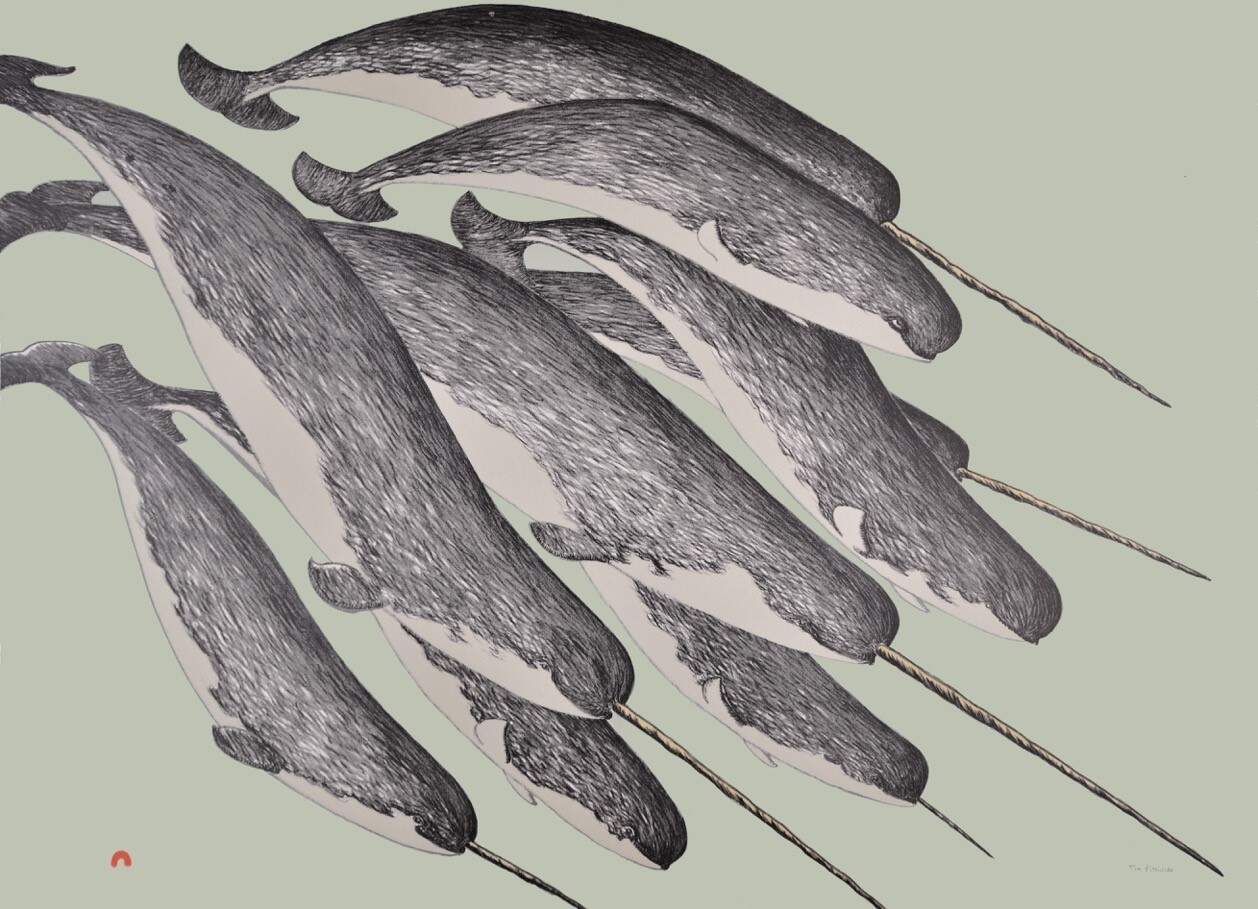Narwhals have fascinated and confounded humans for centuries. Now an exhibition at Salem’s Peabody Essex Museum is diving into the mystery, history and science of these elusive tusked “unicorns of the sea.”
As visitors enter the museum’s Art and Nature Center they’re confronted with a question:
“Are narwhals real?”

Jane Winchell understands why a lot of people don’t think they are. She’s the center’s director and coordinating curator for the Smithsonian Institution’s traveling exhibition “Narwhal: Revealing an Arctic Legend.”
“Most of us will never get the opportunity to see a live narwhal,” she said, “and that is compounded by the fact that they do not survive in captivity.”
Narwhals can only live in icy, Arctic waters, which adds to their mystique. Then there’s pop culture. Stuffed animals, clothing, a tote bag and children’s books in a glass display case reaffirm the narwhal’s fanciful nickname, unicorn of the sea. “I love this image of a narwhal looking a bit grumpy,” Winchell said laughing, “and he’s holding up a banner in front of him saying, ‘not a unicorn.”

A photographic reproduction of a medieval tapestry on an adjacent wall featuring that horned, horse-like creature makes the age-old connection. “There’s every indication that the narwhal tusk is what fueled the imagery of the unicorn,” Winchell said.
Scandinavian traders hunted narwhal and sold their tusks as “unicorn horns” to royalty who believed they possessed magical, protective powers. “Queen Elizabeth I purportedly had a unicorn horn — narwhal tusk — valued at 10,000 pounds in the 1500s,” Winchell said, “which was equivalent to the price of a castle.”
Carvings and sculptures by Inuit artists from the museum’s collection depict more realistic narwhals. But the bulk of this exhibition is science-driven as part of the museum’s Climate and Environment Initiative.

The gallery’s centerpiece is a life-sized, 18-foot-long fiberglass narwhal suspended from the ceiling. “The tusk can really be from 5 feet to over 9 feet,” Winchell explained. “And generally it’s only the males that have a tusk.”
Turns out the narwhal’s tusk is actually a highly sensitive tooth.
“If you can imagine this 9 foot, seemingly hard, inflexible tooth, having roughly nine million connections with its ocean environment, it’s really staggering,” Smithsonian research scientist Martin Nweeia said.

Through his groundbreaking work, he found the flexible tooth is a complex sensory organ that can detect salinity and temperature changes in the water.
Nweeia helped create this traveling exhibition that debuted at the Smithsonian in 2017. He has devoted his academic career to studying the narwhal’s tooth because he’s also a dentist.
“I’ve been in the world of human teeth for so long — and using animal examples — and this one clearly was the most outrageous,” Nweeia said. He also teaches at the Harvard School of Dental Medicine. “As a dentist I thought this whale needed a better story.”

The exhibition shares the mammal’s story through interactive displays, stunning documentary photographs and sound recordings of narwhals vocalizing that immerse visitors in the narwhal’s changing world.
“I’ve been in the water with them,” Nweeia said, “It’s a humbling experience, you realize how majestic, how kind they are.”
Narwhals use echolocation to communicate and hunt deep beneath the ice cover. Nweeia’s team worked closely with Inuit people whose community has relied on hunting narwhal for centuries.
“The Inuit and traditional knowledge is invaluable to our work,” he said, “They are literally full collaborators in the research.”
Nweeia also said narwhals demonstrate how the dramatically diminished polar ice cap (down more than 30% since 1979 according to NASA) — and increased noise pollution from ship traffic and blasting for natural resources — are affecting the Arctic. “All of those things are causing changes not only for narwhal, but really for the web of life up there,” he said.
Advertisement
Winchell hopes visitors to the Smithsonian traveling show take away a deeper understanding of how climate change is impacting the Arctic. “This gives us a window into the hazards that that represents,” she said.
Nweeia has made it his mission to attract more people to join what he calls “narwhal nation.” And he believes the mammals’ trending pop culture cache is helping to bolster the ranks.
“I would say half the adults on the planet don’t even realize that this is an animal on the planet with them,” he said, “If you talk to the average 6 or 7 year old, they’re probably with it. Narwhals are the new cool animal.”
“Narwhal: Revealing an Arctic Legend” is at the Peabody Essex Museum through June 15th.
